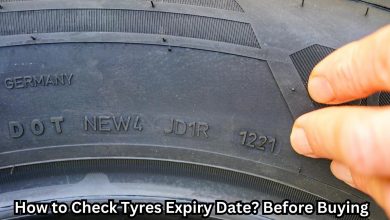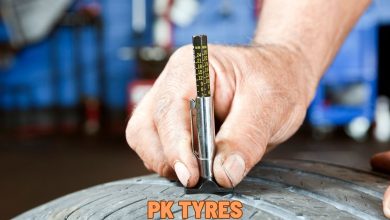자동차에 사용되는 다양한 유형의 타이어 탐색
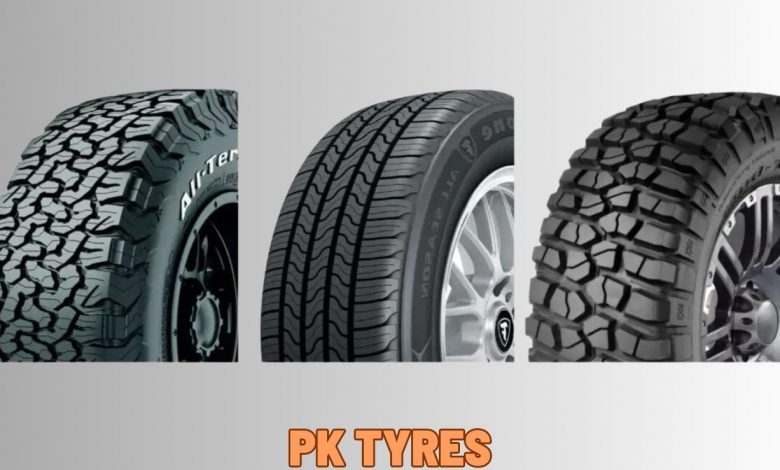
타이어는 자동차의 전반적인 성능과 안전에 중요한 역할을 합니다. 타이어는 운전에 있어 매우 중요합니다. 이는 도로에 닿아 차량의 핸들링, 정지, 이동 방식과 휘발유 사용량 등에 영향을 미칩니다. 자동차 타이어는 자동차의 성능과 운전자가 자동차를 얼마나 쉽게 다룰 수 있는지에 영향을 미칩니다. 보다 안전하고 효율적인 운전을 위해서는 자동차에 사용되는 타이어의 종류를 아는 것이 중요합니다.
자동차에 사용되는 다양한 유형의 타이어
이번 포스팅에서는 자동차에 장착되는 다양한 타이어 유형에 대해 설명합니다. 그것은 당신에게 그것들에 대한 완전한 이해를 줄 것입니다. 차량, 시즌, 특정 요구 사항에 따라 타이어 유형을 분류해 보겠습니다. 귀하의 필요에 맞는 타이어를 선택하려면 각 유형의 기능과 이점에 대해 알아보십시오. 이는 귀하에게 가장 적합한 것이 무엇인지 이해하는 데 도움이 될 것입니다. 이 기사에서는 올바른 타이어를 선택하는 방법을 설명합니다. 자동차 제조업체가 제안하는 사항, 날씨, 운전 방법, 지갑, 타이어 관리 등의 요소에 대해 배우게 됩니다.
이 기사에서는 다양한 유형의 타이어(자동차, 트럭/SUV, 대형 차량용 타이어)를 자세히 살펴보겠습니다. 각 카테고리를 개별적으로 살펴보고 다양한 유형에 대해 이야기하겠습니다. 또한 각각의 좋은 점과 나쁜 점에 대해서도 논의하겠습니다. 또한 계절별로 타이어에 라벨을 붙이는 방법에 대해서도 이야기하겠습니다. 즉, 여름용 타이어, 겨울용 타이어, 사계절용 타이어를 살펴보겠습니다. 각 타이어 유형의 성능 특성과 고려 사항을 이해하면 독자가 자신의 운전 조건에 따라 현명한 결정을 내릴 수 있습니다.
특정 운전 조건에 맞게 설계된 특수 타이어를 살펴보겠습니다. 오프로드/전지형, 고성능, 런플랫의 세 가지 유형의 타이어를 살펴보겠습니다. 각각에는 멋진 기능, 이점 및 한계가 있습니다. 이 섹션에서는 사람들이 자신의 운전 요구 사항에 적합한 타이어를 찾는 데 도움이 될 것입니다.
타이어 이해: 기본 구성 요소 및 기능
다양한 유형의 자동차 타이어를 이해하려면 타이어 제작 방법을 아는 것이 중요합니다. 타이어는 올바른 작동을 돕는 기본 구조를 가지고 있습니다. 일반적인 타이어는 각각 특정 목적을 수행하는 몇 가지 주요 구성 요소로 구성됩니다.
- 트레드(Tread) : 타이어가 노면과 접촉하는 가장 바깥쪽 부분. 타이어의 설계 방식과 홈의 깊이는 매우 중요합니다. 이는 차량이 지면을 접지하고 물 속에서 이동하며 제어력을 유지하는 데 도움이 됩니다.
- 측벽(Sidewall): 트레드와 비드 사이의 수직 영역. 타이어 외부는 내부를 보호하며 크기, 브랜드, 필요한 공기량과 같은 세부 정보를 담고 있습니다.
- 비드(Bead): 휠 림에 단단히 부착되는 타이어의 내부 가장자리입니다. 일반적으로 림과의 강한 결합을 보장하기 위해 고무로 감싼 강철 와이어로 만들어집니다.
- 플라이(Ply): 타이어에 강도와 안정성을 제공하는 직물 또는 강철 코드의 층입니다. 타이어는 제조 방법에 따라 층이 다릅니다. 가장 일반적인 두 가지 유형은 방사형 및 바이어스 플라이입니다.
- 벨트: 트레드 아래에 위치한 강철 또는 직물 층. 벨트는 추가적인 보강을 제공하고 안정성을 강화하며 트레드 수명을 향상시킵니다.
- 이너 레이어(Inner Layer): 타이어의 안쪽 레이어를 이너 라이너라고 합니다. 고무로 만들어졌으며 타이어 내부의 공기를 유지하여 타이어가 적절하게 팽창할 수 있도록 도와줍니다.
자동차 타이어의 주요 기능
타이어는 자동차를 안전하게 만들고 좋은 성능을 발휘하는 데 중요한 역할을 합니다.
- 견인력은 자동차의 타이어가 도로에 얼마나 잘 달라붙어 안전하게 운전하고 쉽게 회전할 수 있는지를 나타냅니다. 타이어의 트레드 패턴, 컴파운드 및 전체적인 디자인은 견인력에 큰 영향을 미칩니다.
- 타이어는 자동차를 제어하는 방법에 중요합니다. 바퀴를 돌리고 차를 움직이는 데 도움이 됩니다. 피드백과 컨트롤이 좋아서 차량 핸들링이 편합니다. 쉽게 조작할 수도 있습니다.
- 운전자를 위한 좋은 소식: 차를 멈춰야 할 때 타이어는 브레이크를 밟는 데 도움이 되도록 도로에서 많은 마찰을 가해야 합니다! 좋은 타이어는 특히 긴급 상황에서 안전한 정지를 위해 중요합니다. 그립력이 좋고 트레드 깊이가 충분한지 확인하세요.
- 타이어는 도로의 충격과 진동을 흡수하여 승차감에 영향을 미칩니다. 이는 차량에 탑승한 사람들의 승차감을 더욱 부드럽게 만듭니다. 타이어가 만들어지는 방식, 트레드의 모양, 쿠셔닝이 승차감에 미치는 영향.
- 구름 저항이 낮은 타이어는 움직이는 데 더 적은 에너지가 필요하므로 연료를 절약하는 데 도움이 됩니다. 연료 효율을 위해 특별히 설계된 타이어를 선택하면 전반적인 연료 소비와 탄소 배출을 줄이는 데 도움이 될 수 있습니다.
- 타이어는 자동차가 안정적으로 유지되고, 적절하게 움직이고, 멈출 수 있도록 도와주기 때문에 안전에 매우 중요합니다. 좋은 타이어는 젖은 도로와 악천후에 도움이 됩니다. 접지력이 향상되고 수막 현상 위험이 줄어들며 차량을 더욱 안전하게 제어할 수 있습니다.
타이어의 작동 방식과 역할을 아는 것이 다양한 판매 유형을 이해하는 데 중요합니다. 다양한 차량, 계절, 특별한 요구사항에 맞는 타이어 유형을 확인해 보세요. 그런 다음 귀하의 운전에 적합한 것을 선택할 수 있습니다.
차량 유형에 따른 타이어 분류
- 승용차 타이어는 사람을 태우는 자동차를 위해 만들어졌습니다. 세단, 해치백, 쿠페에서 가장 잘 작동합니다. 자동차는 잘 작동하고, 기분이 좋고, 휘발유를 너무 많이 사용하지 않도록 만들어졌습니다. 이는 일상적인 운전을 위해 설계되었기 때문입니다.
- 일반적인 하위 유형 사계절 타이어는 건조함, 습함, 약간의 눈 등 다양한 기상 조건에서 탁월한 성능을 발휘합니다. 견인력, 핸들링 및 수명의 균형 잡힌 조합을 제공합니다.
- 퍼포먼스 타이어는 더 나은 운전을 돕기 위해 만들어졌습니다. 고속으로 운전할 때 더 많은 제어력과 그립력을 제공합니다. 더욱 즐거운 운전을 원하는 사람들에게 적합합니다. 그들은 종종 프로필이 낮고 향상된 코너링 기능을 제공합니다.
- 겨울용 타이어는 추운 날씨에 맞게 제작되었으며 얼음과 눈 위에서 가장 잘 작동합니다. 이 신발은 바닥에 특별한 디자인이 있으며 젖은 표면에서도 안정감을 유지하는 데 도움이 되는 일종의 고무를 사용합니다.
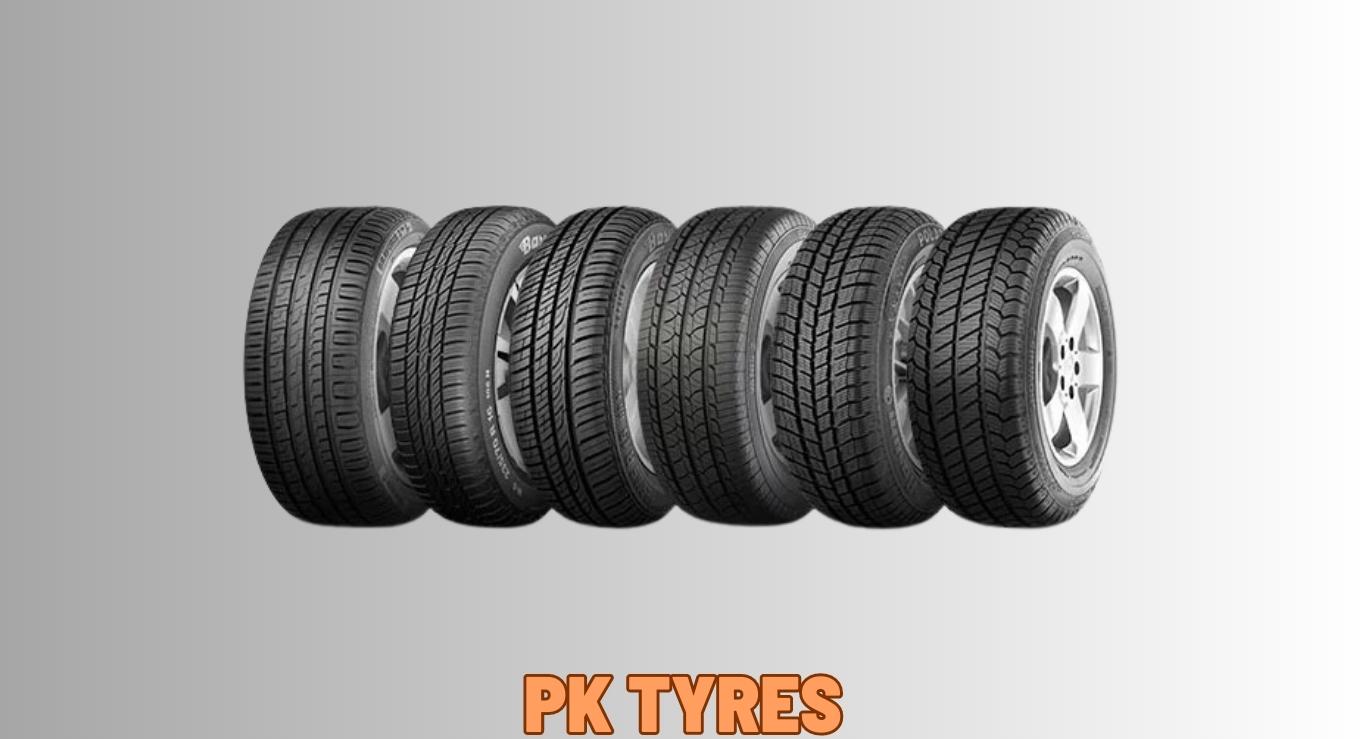
하위 유형 가. 올시즌 타이어의 장점:
- 일년 내내 사용할 수 있는 다목적 제품입니다.
- 좋은 트레드 수명.
- 부드럽고 편안한 승차감.
단점:
- 극한의 기상 조건에서 적당한 성능을 발휘합니다.
- 특수 타이어에 비해 그립력이 떨어집니다.
퍼포먼스 타이어의 장점:
- 향상된 핸들링 및 코너링 기능.
- 향상된 제동 성능과 스포티한 느낌을 선사합니다.
단점:
- 트레드 수명 감소.
- 덜 편안한 승차감.
- 어쩌면 더 시끄러울 수도 있습니다.
겨울용 타이어의 장점:
- 눈과 빙판길에서 탁월한 견인력을 발휘합니다.
- 추운 날씨에 제동 성능이 향상되었습니다.
단점:
- 건조하거나 따뜻한 도로에서는 성능이 저하됩니다.
- 더 높은 구름 저항.
- 트레드 수명이 제한되어 있습니다.
소형 트럭/SUV 타이어
- 소형 트럭/SUV 타이어는 SUV, 크로스오버, 소형 트럭과 같은 대형 차량용으로 제작되었습니다. 이들은 이러한 차량의 고유한 요구 사항을 처리할 수 있습니다. 이 차량은 도로에서 편안하고 오프로드에서도 잘 작동하도록 제작되었습니다. 무거운 짐을 견인하고 다양한 작업을 처리할 수 있습니다.
- 일반적인 하위 유형 고속도로 타이어는 도로 주행에 적합합니다. 부드럽고 조용한 승차감을 제공하고 연료를 절약하는 데 도움이 됩니다.
- 전지형 타이어는 온로드와 오프로드 주행 모두에 적합하도록 제작되었습니다. 좋은 그립력을 제공하여 자갈, 먼지 및 가벼운 진흙에서 잘 작동합니다.
- 진흙 지형 타이어: 이 타이어는 심각한 오프로드 매니아를 위해 특별히 설계되었습니다. 타이어는 험난한 도로를 주행할 수 있도록 거친 패턴과 측면을 가지고 있습니다. 이곳은 진흙과 바위가 많아 거칠고 고르지 않을 수 있습니다.
- 타이어 트레드 깊이: 의미 및 중요한 이유.
하위 유형 가. 고속도로 타이어의 장점:
- 편안하고 조용한 승차감.
- 연료 효율성이 좋습니다.
- 긴 트레드 수명.
단점:
- 제한된 오프로드 기능.
- 미끄러운 표면에서는 견인력이 감소합니다.
전지형 타이어의 장점:
- 온로드와 오프로드 주행 모두에 다재다능합니다.
- 다양한 표면에서 견인력이 좋습니다.
- 내구성이 향상되었습니다.
단점:
- 고속도로 타이어에 비해 소음이 약간 더 큽니다.
- 온로드 성능이 저하되었습니다.
진흙 지형 타이어의 장점:
탁월한 오프로드 주행
단점:
- 포장된 도로에서 더 험난한 라이딩을 해보세요.
- 도로 소음이 증가했습니다.
- 연료 효율이 감소합니다.
상업용 차량 타이어
- 상업용 차량 타이어는 트럭, 버스, 밴과 같은 힘든 작업을 처리하기 위해 만들어졌습니다. 내구성이 뛰어나도록 제작되었습니다. 상업용 차량은 무거운 짐을 싣고 오래 가야 합니다. 그렇기 때문에 그들은 강하고 안정적으로 만들어졌습니다.
- 일반적인 하위 유형 고속도로 타이어: 이 타이어는 장거리 고속도로 주행용으로 설계되어 뛰어난 연비와 연비를 제공합니다. 포장도로에서의 고속, 장거리 주행을 견딜 수 있도록 제작되었습니다.
- 지역 타이어는 특정 지역이나 지역 내에서 이동하는 차량에 가장 적합합니다. 이 타이어는 고속도로, 도시 도로 등 다양한 유형의 도로를 주행할 수 있습니다. 그들은 또한 오래 지속되고 좋은 그립감을 가지고 있습니다.
- 오프로드 타이어는 비포장 도로를 자주 주행하는 차량용으로 설계되었습니다. 오프로드 타이어는 험난한 지형을 위해 설계되었습니다. 펑크에 저항하고 좋은 견인력을 제공하기 위해 강한 트레드와 측벽이 있습니다.
하위 유형 가. 고속도로 타이어의 장점:
- 주행거리와 연비가 우수합니다.
- 오래 지속되는 트레드 수명.
- 부드럽고 편안한 승차감.
단점:
- 제한된 오프로드 기능.
- 악천후 조건에서 견인력이 감소합니다.
지역 타이어 전문가:
- 다양한 도로 조건에 적합합니다.
- 견인력과 내구성이 좋습니다.
- 핸들링과 안정성이 향상되었습니다.
단점:
- 고속도로 타이어에 비해 주행거리가 짧습니다.
- 연료 효율이 감소합니다.
오프로드 타이어의 장점:
- 뛰어난 오프로드 성능.
- 거친 지형에서 뛰어난 견인력.
- 펑크 저항이 증가했습니다.
단점:
- 포장도로에서는 더 시끄럽고 거친 주행이 가능합니다.
- 연료 효율이 낮습니다.
- 트레드 수명이 짧아집니다.
차량 유형에 따라 타이어가 어떻게 분류되는지 아는 것이 중요합니다. 이는 귀하의 운전 요구 사항과 조건에 맞는 올바른 타이어를 선택하는 데 도움이 됩니다. 올바른 유형의 타이어를 선택하면 자동차 성능, 안전성, 운전 즐거움에 큰 영향을 미칠 수 있습니다. 일반 승용차, 트럭, 심지어 업무용 차량을 운전해도 상관없습니다. 다음으로 타이어가 계절별로 어떻게 분류되는지 살펴보겠습니다. 이는 귀하의 필요에 맞는 올바른 타이어를 선택하는 데 도움이 될 것입니다.
계절별 사용에 따른 타이어 분류
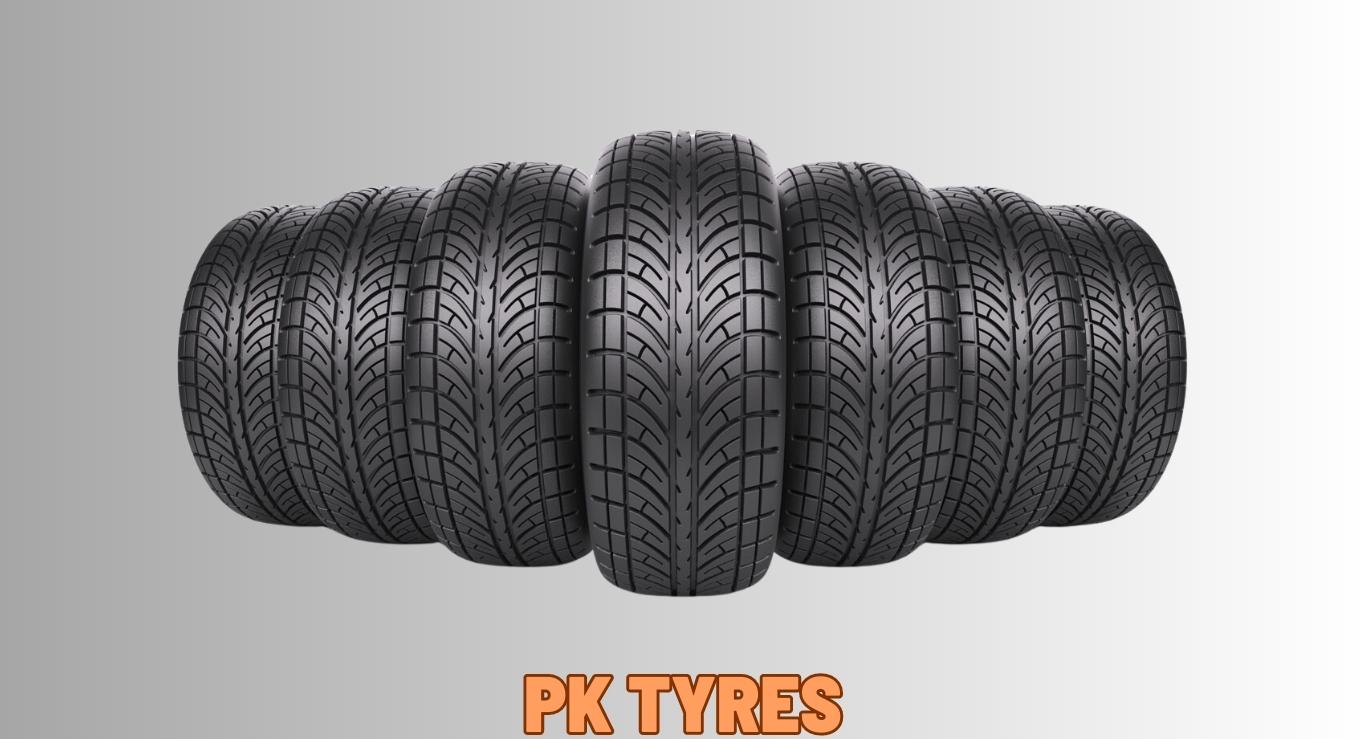
여름용 타이어
여름용 타이어 또는 고성능 타이어는 따뜻하고 건조한 환경에서 가장 잘 작동합니다. 그들은 많은 기능과 이점을 가지고 있습니다. 이는 다음과 같은 특징이 있습니다.
- 건조한 표면에서 접지력을 극대화하는 독특한 트레드 패턴.
- 향상된 견인력과 반응성을 위한 부드러운 고무 화합물.
- 보다 스포티한 운전 경험을 위해 핸들링 및 코너링 기능이 향상되었습니다.
- 효율적인 물 분산으로 수막 현상의 위험을 줄입니다.
성능 특성
- 건식 견인력과 제동 성능이 뛰어납니다.
- 따뜻한 날씨에 향상된 반응성과 핸들링.
- 공격적인 운전 조작 시 뛰어난 그립력.
- 구름저항을 줄여 연비를 높였습니다.
고려 사항 및 제한 사항
- 습하거나 추운 환경에서는 성능과 그립력이 저하됩니다.
- 눈이나 얼음 위에서는 견인력이 제한됩니다.
- 사계절 타이어에 비해 트레드 수명이 짧습니다.
- 도로 소음이 증가하고 승차감이 약간 더 단단해지기 쉽습니다.
겨울용 타이어
스노우 타이어라고도 불리는 겨울용 타이어는 추운 도로에서 안전하게 운전할 수 있도록 도와줍니다. 더 나은 견인력을 제공하고 제어력을 유지하는 데 도움이 됩니다. 그들은 다음과 같은 기능을 제공합니다:
- 눈과 얼음에 대한 접지력을 향상시키기 위해 더 깊은 홈과 사이프가 있는 독특한 트레드 패턴.
- 저온에서도 유연성을 유지하는 부드러운 고무 화합물.
- 얼음 표면에서의 제동 성능이 향상되었습니다.
- 춥고 눈이 오는 환경에서 뛰어난 견인력과 핸들링을 제공합니다.
성능 특성
- 눈, 진창, 얼음 위에서 뛰어난 그립력과 견인력을 발휘합니다.
- 추운 날씨에는 제동 거리가 짧아집니다.
- 겨울철 환경에서 안정성과 제어력이 향상되었습니다.
- 미끄러짐 위험과 통제력 상실 위험이 감소합니다.
고려 사항 및 제한 사항
- 여름용 또는 사계절용 타이어에 비해 건조하거나 따뜻한 도로에서 성능이 저하됩니다.
- 회전 저항이 높을수록 연비는 약간 낮아집니다.
- 건조한 표면에 사용하면 트레드가 더 빨리 마모됩니다.
- 영하의 온도에서는 효과가 제한됩니다.
올 시즌 타이어
사계절 타이어는 일년 내내 다양한 날씨에서 잘 작동합니다. 이는 날씨 변화에도 좋은 성능을 발휘한다는 것을 의미합니다. 그들은 다음과 같은 기능을 제공합니다:
- 건식 및 습식 접지력의 균형을 제공하는 다양한 트레드 패턴.
- 가벼운 눈이나 진창에서 적절한 그립을 위한 적당한 트레드 깊이.
- 따뜻한 온도와 차가운 온도 모두에서 우수한 핸들링과 안정성을 제공합니다.
- 여름용 또는 겨울용 타이어에 비해 트레드 수명이 더 깁니다.
성능 특성
- 건조하고 습한 환경에서도 안정적인 견인력과 제동 성능을 발휘합니다.
- 가벼운 눈이나 진창에서도 허용되는 성능입니다.
- 일년 내내 부드럽고 편안한 승차감.
- 특수 타이어에 비해 트레드 수명이 더 깁니다.
고려 사항 및 제한 사항
- 여름용 또는 겨울 전용 타이어에 비해 최적의 성능이 떨어집니다.
- 혹독한 겨울 조건에서 견인력이 감소합니다.
- 폭설이나 도로 결빙 등 극한 기후에는 적합하지 않습니다.
- 성능은 특정 사계절 타이어 모델에 따라 달라질 수 있습니다.
다양한 계절과 운전 상황에 따라 어떤 타이어를 사용해야 하는지 아는 것이 중요합니다. 타이어의 분류는 이를 반영하며 올바른 분류를 선택하는 데 도움이 됩니다. 따뜻하고 건조한 환경을 위한 여름용 타이어, 춥고 눈이 내리는 환경을 위한 겨울용 타이어, 연중 다용도를 위한 올시즌 타이어 등 각 유형에는 고유한 특징, 장점 및 제한 사항이 있습니다. 다음으로, 다양한 운전 상황에 맞는 특수 타이어에 대해 이야기하겠습니다. 이를 통해 올바른 타이어 선택에 대해 자세히 알아볼 수 있습니다.
특정 운전 조건을 위한 특수 타이어
오프로드 및 전지형 타이어는 비포장 도로를 주행하는 차량용으로 제작됩니다. 이러한 유형의 운전에 도움이 되는 고유한 기능이 있습니다. 그들은 다음과 같은 기능을 제공합니다:
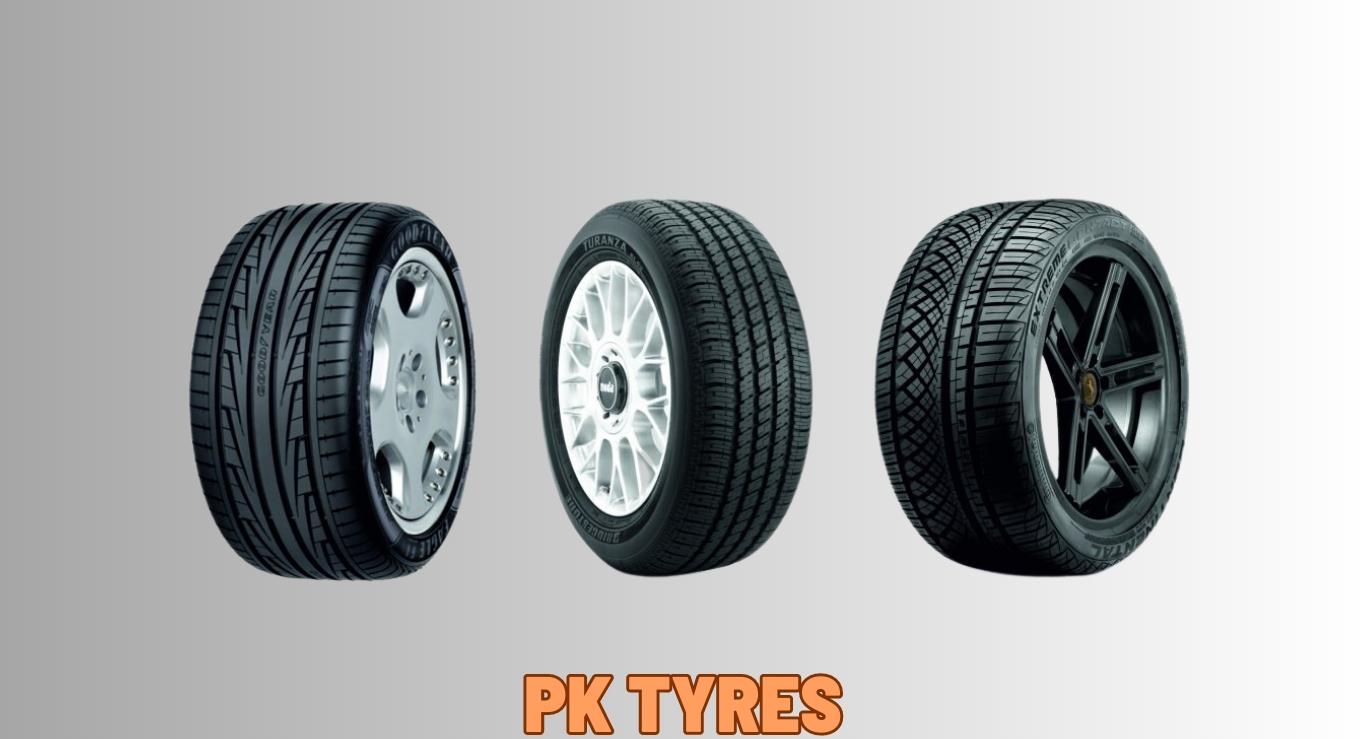
- 다양한 지형에서 견인력을 향상시키기 위해 더 큰 러그 또는 블록이 있는 공격적인 트레드 패턴입니다.
- 암석, 잔해, 오프로드 장애물로 인한 손상을 방지하기 위해 측벽을 강화했습니다.
- 내구성을 높이기 위해 펑크 방지 기능을 높였습니다.
- 자갈, 먼지, 진흙, 울퉁불퉁한 표면에서 뛰어난 그립력과 견인력을 발휘합니다.
성능 특성
- 거친 지형을 주행할 수 있는 탁월한 오프로드 성능.
- 까다로운 표면에서 향상된 견인력과 그립력.
- 오프로드 주행 시 제어력과 안정성이 향상되었습니다.
- 가혹한 조건을 견딜 수 있도록 내구성이 향상되었습니다.
고려 사항 및 제한 사항
- 도로 소음이 증가하고 포장 도로에서 승차감이 더 거칠어졌습니다.
- 공격적인 트레드 패턴으로 인해 연비가 낮아집니다.
- 고속도로나 사계절 타이어에 비해 트레드 수명이 짧습니다.
- 젖어 있거나 얼어붙은 도로에서는 성능이 저하됩니다.
고성능 타이어
고성능 타이어는 멋지고 빠른 자동차를 위해 만들어졌습니다. 스포츠카, 고급 자동차, 고급 세단에 가장 적합합니다. 그들은 다음과 같은 기능을 제공합니다:
- 향상된 핸들링 및 코너링 기능을 위한 로우 프로파일 디자인.
- 반응성과 조향 정밀도가 향상되었습니다.
- 탁월한 견인력과 그립감을 제공하는 고급 고무 화합물.
- 향상된 제동력을 위해 제동 성능이 향상되었습니다.
성능 특성
- 고속에서의 핸들링과 기동성이 뛰어납니다.
- 스포티한 운전 경험을 위해 향상된 견인력과 그립력.
- 안전성 향상을 위해 제동 거리가 짧아졌습니다.
- 정확한 조향 반응 및 피드백.
고려 사항 및 제한 사항
- 표준 타이어에 비해 트레드 수명이 단축됩니다.
- 로우 프로파일 디자인으로 인해 승차감이 더욱 가혹해졌습니다.
- 습하거나 눈이 오는 조건에서는 성능이 제한됩니다.
- 일반 타이어에 비해 가격이 높습니다.
런플랫 타이어
특징 및 장점 런플랫 타이어는 펑크가 발생하거나 공기압이 손실된 후에도 차량이 제한된 거리 동안 계속 주행할 수 있도록 설계되었습니다. 그들은 다음과 같은 기능을 제공합니다:
- 공기압 없이 차량의 무게를 지탱할 수 있는 강화된 측벽.
- 타이어에 펑크가 난 경우에도 이동성이 향상되어 서비스 센터나 안전한 장소까지 차량을 운전해 이동할 수 있습니다.
- 갑작스러운 타이어 고장 위험을 줄여 안전성을 높였습니다.
- 런플랫 타이어 탐색: 운전자를 위한 장단점.
성능 특성
- 펑크 후 감소된 속도로 일정 거리를 이동할 수 있는 능력입니다.
- 타이어 공기압을 빼도 안정성과 제어력이 유지됩니다.
- 즉각적인 타이어 교체나 긴급 출동 지원이 필요하지 않습니다.
고려 사항 및 제한 사항
- 펑크 후 주행 거리와 속도가 제한됩니다.
- 더 단단한 측벽으로 인해 승차감이 감소합니다.
- 일반 타이어에 비해 가격이 높습니다.
- 특정 차량 모델의 경우 가용성이 제한됩니다.
특수 타이어는 특정 운전 조건에 맞춰 고유한 기능과 이점을 제공합니다. 다양한 요구에 맞는 다양한 유형의 타이어가 있습니다. 오프로드를 주행하려면 전지형 타이어가 필요합니다. 스포티한 드라이빙을 위해서는 고성능 타이어가 필요합니다. 그리고 추가적인 안전성을 원할 경우 런플랫 타이어를 사용할 수 있습니다. 특수 타이어는 다양한 운전 요구 사항에 맞는 특정 기능을 갖추고 있습니다. 운전 선호도에 따라 더 나은 선택을 하려면 이를 잘 알아 두십시오. 다음으로 기사의 중요한 아이디어를 요약하고 마무리하겠습니다.
타이어 선택 시 고려해야 할 요소
- 올바른 타이어 크기, 적재 용량 및 속도 등급에 대해 자동차 제조업체가 제안하는 내용을 확인하십시오.
- 제조업체의 권장 사항을 준수하면 호환성, 안전성 및 최적의 성능이 보장됩니다.
기후 및 기상 조건
- 해당 지역의 주요 기후와 기상 조건을 고려하십시오.
- 따뜻한 날에는 여름용 타이어, 춥고 눈이 내리는 날에는 겨울용 타이어 등 날씨에 적합한 타이어를 선택하세요.
- 사계절 타이어는 날씨 변화가 심하지 않은 장소에 적합합니다.
운전 스타일 및 습관
- 귀하의 운전 방식을 평가하고 귀하가 좋아하는 타이어를 선택하십시오.
- 퍼포먼스와 스포티한 드라이빙을 중시한다면 고성능 타이어가 적합할 수도 있습니다.
- 오프로드 모험을 위해 전지형 타이어는 필요한 견인력과 내구성을 제공합니다.
- 차를 선택할 때, 당신이 좋아하는 것이 무엇인지 생각해 보세요. 편안하고, 조용하고, 가스를 덜 사용하고 싶나요?
예산 고려 사항
- 타이어 구매 예산을 설정하세요.
- 다양한 타이어 브랜드와 소매업체의 가격을 조사하고 비교하세요.
- 저렴한 타이어는 성능, 내구성 및 안전성을 저하시킬 수 있다는 점을 명심하십시오.
- 예산 고려 사항과 차량의 품질 및 성능 요구 사항 사이의 균형을 맞추십시오.
적절한 유지 관리의 중요성
- 타이어의 수명과 최적의 성능을 보장하려면 타이어를 정기적으로 유지 관리하십시오.
- 안전, 연비 및 타이어 수명을 향상하려면 적절한 타이어 공기압 수준을 유지하십시오.
- 타이어를 정기적으로 교체하여 트레드 마모를 균일하게 하고 수명을 연장하십시오.
- 타이어에 상처, 부풀어오름 또는 고르지 못한 마모 패턴과 같은 손상이나 마모의 징후가 있는지 검사하십시오.
- 타이어가 너무 닳았거나 지저분해 보이면 타이어를 교체해야 합니다. 너무 오래 기다리지 마세요!
타이어를 선택할 때 이러한 사항을 고려하여 귀하의 자동차와 운전 방법에 대한 현명한 선택을 하십시오. 선택할 때 안전, 성능 및 수명을 우선시하는 것을 잊지 마십시오. 타이어가 최대한 오랫동안 최고의 성능을 발휘할 수 있도록 타이어를 잘 관리하십시오.
결론:
우리는 자동차에 사용되는 다양한 유형의 타이어를 살펴보았습니다. 차량, 연식, 운전 조건에 따라 타이어가 어떻게 분류되는지에 대해 이야기했습니다. 우리 수업에서는 다양한 유형의 타이어를 공부했습니다. 승용차, 트럭, 상용차용 타이어가 있습니다. 또한 여름, 겨울, 사계절 등 다양한 계절에 맞는 타이어에 대해서도 알아봤습니다. 또한 특수 타이어도 있습니다. 각 유형의 타이어에는 고유한 특징, 이점, 성능 특성 및 고려 사항이 있습니다.
올바른 타이어 선택의 중요성
내 차량에 맞는 타이어를 선택하는 것이 가장 중요합니다. 자동차 타이어는 자동차가 얼마나 잘 달리는지, 얼마나 안전한지, 그리고 얼마나 많은 연료를 사용하는지에 있어 매우 중요합니다. 귀하의 차량, 운전 스타일, 날씨에 맞는 타이어를 선택하세요. 이를 통해 견인력, 제어력, 제동력이 향상되어 운전 능력이 향상됩니다. 적절한 타이어 선택은 최적의 성능, 안전 및 내구성을 보장합니다.
타이어 선택을 통한 자동차 성능 향상에 대한 최종 고찰
자동차의 주행 방식을 개선하려면 자동차에 적합한 타이어를 선택하는 것이 중요합니다. 최고의 타이어를 선택하는 것은 큰 영향을 미칠 수 있습니다. 차량의 접지력을 향상시키고, 차량을 더 효과적으로 제어할 수 있도록 도와주며, 다양한 도로와 기상 조건에서도 안전을 지켜줍니다. 게다가 연료도 절약할 수 있습니다. 자동차에 대해 현명한 선택을 하려면 제조업체의 설명, 날씨, 운전 방식, 돈, 차량 상태를 잘 유지하는 방법 등을 생각해 보세요.
자동차용 타이어에는 다양한 종류가 있습니다. 올바른 것을 선택하고 선택하는 방법을 아는 것은 운전을 더욱 안전하고 효율적이며 재미있게 만들 수 있습니다. 올바른 타이어를 선택하고 잘 관리하면 자동차가 더 잘 작동하고 편안한 승차감을 누릴 수 있습니다. 안전을 유지하고 전문가와 상담하여 귀하의 자동차와 운전 요구 사항에 맞는 타이어에 대한 조언을 얻으십시오.
자주 묻는 질문:
Q1: 타이어는 얼마나 자주 교체해야 합니까?
타이어 교체는 다양한 요인에 따라 달라집니다. 여기에는 트레드의 마모 정도, 연식, 운전 방식 등이 포함됩니다. 자동차 타이어가 1.6mm(2/32인치)까지 마모되었거나 손상 또는 마모된 흔적이 보이면 교체하는 것이 가장 좋습니다. 타이어가 6년이 넘었다면 자주 확인하고 괜찮아 보이더라도 교체하는 것이 좋습니다.
Q2: 차량에 다양한 종류의 타이어를 혼합할 수 있나요?
자동차에 다양한 유형의 타이어를 혼합하여 사용하지 않는 것이 가장 좋습니다. 각 유형의 타이어는 혼합 시 호환되지 않을 수 있는 특정 특성과 성능을 갖도록 설계되었습니다. 타이어를 혼합하면 핸들링, 견인력 및 전반적인 안전에 영향을 미칠 수 있습니다. 최적의 성능을 유지하려면 동일한 유형, 브랜드 및 크기의 전체 타이어 세트를 사용하는 것이 가장 좋습니다.
Q3: 내 차량에 적합한 타이어 크기를 어떻게 알 수 있나요?
A3: 차량에 맞는 타이어 크기는 사용 설명서나 운전석 측 도어 잼에서 확인할 수 있습니다. 일반적으로 숫자와 문자의 혼합으로 표시됩니다(예: P215/60R16). 이 정보는 타이어의 폭, 종횡비, 구조 유형 및 림 직경을 지정합니다. 두 가지 옵션이 있습니다. 타이어 전문가에게 문의하거나 제조업체가 자동차 모델에 대해 말하는 내용을 확인하는 것입니다.
Q4: 타이어 공기압은 성능과 안전에 어떤 영향을 미치나요?
A4: 적절한 타이어 공기압은 성능, 안전 및 타이어 수명에 매우 중요합니다. 타이어 공기압이 낮으면 연비가 줄어들고 타이어 마모가 고르지 않으며 제어가 어려워질 수 있습니다. 타이어 공기압이 너무 높으면 승차감이 거칠고, 손상이 더 쉽게 발생하며, 도로 접지력이 떨어지는 등의 문제가 발생할 수 있습니다. 자동차의 원활한 작동을 유지하고, 안전을 유지하고, 더 나은 핸들링을 유지하려면 타이어 공기압을 자주 점검해야 합니다. 제조업체에서는 어떤 압력을 사용할지 권장하므로 그에 따르십시오.
Q5: 겨울용 타이어를 일년 내내 사용할 수 있나요?
겨울용 타이어는 눈이 오거나 추운 날씨에는 잘 작동하지만 일년 내내 사용해서는 안 됩니다. 겨울용 타이어는 따뜻하고 건조한 도로에서 더 빨리 마모되는 부드러운 고무를 사용합니다. 이로 인해 성능과 수명이 단축됩니다. 겨울이 지나면 타이어를 사계절용이나 여름용으로 바꿔야 합니다. 이것이 잘 작동하고 오래 지속되는 데 더 좋습니다.
Q6: 타이어 교체는 얼마나 자주 해야 합니까?
A6: 타이어 교체는 트레드 마모를 균일하게 촉진하고 타이어 수명을 연장하는 데 도움이 됩니다. 5,000~7,500마일마다 또는 자동차 사용 설명서에 명시된 대로 타이어를 교체해야 합니다. 규칙적인 회전은 타이어가 고르게 마모되고 일관된 성능을 유지하도록 보장합니다.
이 FAQ는 타이어 및 타이어 유지 관리와 관련된 몇 가지 일반적인 문의 사항을 해결합니다. 걱정거리나 더 궁금한 점이 있으면 타이어 전문가와 상담하세요. 귀하의 차량과 운전 습관에 따라 맞춤형 조언을 제공해 드릴 수 있습니다.

